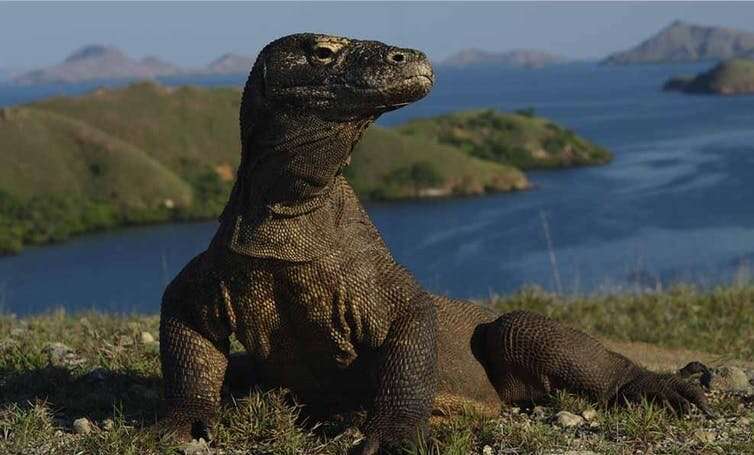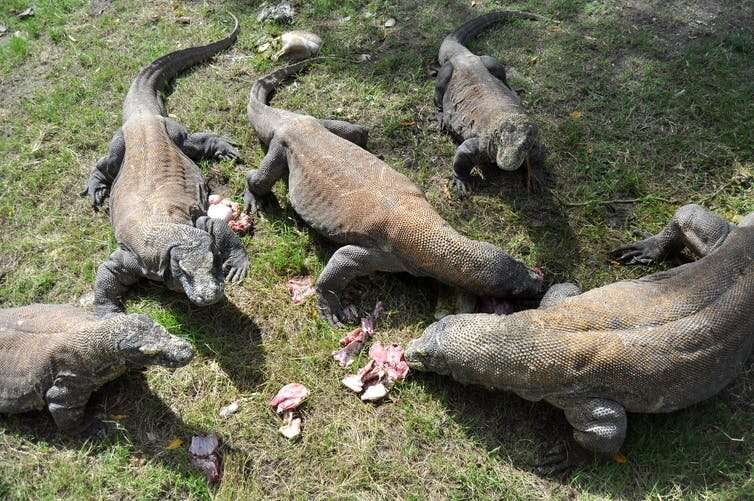Why we must reassess the komodo dragon's endangered status

The Indonesian endemic world's largest lizard komodo dragons (Varanus komodoensis) recently entered the International Union for Conservation of Nature (IUCN) list of "Endangered" species, marking it as having high risk of extinction.
This announcement is quite shocking. Neither I nor other academics in the field of conservation—who are also IUCN members—from Indonesia were invited to discuss the reassessment of the komodo dragons status. Only taxonomists from Indonesia were invited to related meeting in Singapore last year.
Before the status change, the komodo dragons had been in "Vulnerable" status, or one level under Threatened, since 1996.
According to the IUCN, the komodo dragons are threatened by the impact of climate change and that in the next 45 years, the rising of global temperature and subsequent sea levels will reduce more than 30% of the ancient lizard's habitat in Komodo National Park.
Data accuracy is vital
In my experience assessing various species, Endangered status is decided with stringent criteria. Some questions would undoubtedly come up: is there a genetic change? Is there excessive poaching or habitat encroachment? Has their habitat been reduced?
Experts from all over the world will discuss all of those questions with strong scientific evidence.
However, the komodo dragon's recent assessment seems to be based on an assumption: the risk of sea-level rise caused by global warming.
This risk is based on a study published in July 2020. Using modeling and spatial analysis, the study analyzed the correlation between subsequent sea-level rise and the komodo dragon habitat.
The study predicts that the komodo dragon's habitat could decrease by around 8–87% by 2050. This decrease could reduce the lizard's population by between 27–99%.
These are predictions. What if the effects of global warming can be reduced drastically? If the sea level actually rise, could it reduce the dragon's population?

These questions still need to be further investigated. We know komodo dragons actively move on hills
This species is also an excellent swimmer; they can even swim between islands. The komodo dragons are also capable of diving up to 4.5 meters deep.
Furthermore, since five years ago, komodo's population is stable. Currently, there are 3,458 komodo dragons, of which 1,383 are adults.
I suggest we reassess the komodo dragon's status on the Red List because limited evidence can lead to errors in actions.
We also need to recall that in 1996 the IUCN classified Javan gibbon (Hylobates moloch) as Critically Endangered—from previously Threatened. This status is one category away from Extinct in the Wild.
This classification raised controversy, leading to further discussions being carried out.
The discussions revealed that the IUCN only received limited data on the Javan gibbon population: around 2,000. In fact, valid data showed the population reached 5,000. Eventually, in 2008, IUCN classed gibbon as "Endangered."
Stronger conservation effort still needed
Although the population is stable, the komodo dragon is still a vulnerable species. We need a stronger effort to conserve them.
One thing that needs to be considered is limiting human interactions. Currently, tourists, especially on Rinca Island, can get quite close with the komodo dragons. This can lead to changes in the lizard's behavior and increase the risk of disease transmission.
The 15 tourist paths on Komodo Island must be strictly monitored. If necessary, for the sake of the lizard population, some of the tracks should be moved to other islands.
Saving the komodo dragons also means conserving their natural prey, such as deer and pigs. The dragon's predatory instincts must be maintained so that the species can survive in the wild, without excessive intervention from humans
No comments:
Post a Comment